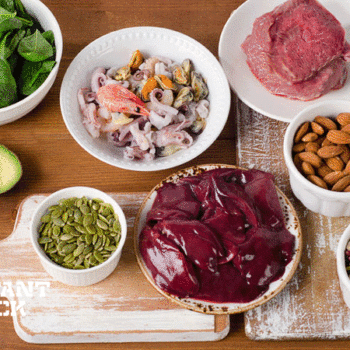What Sport Makes You Lose the Most Weight?

When it comes to successfully cutting weight, shredding body fat and chiseling out some tight abs you have to master the basics to reach your goals.
That’s because focusing on less important aspects of the journey first will quickly lead you away from where you want to be.
Once you’ve beaten the into submission though it’s time to go after the more advanced stuff. This is where fat loss gets fun.
In this article we look at the most challenging exercises and see which sport burns the most calories.
If you’re here because you want to use competitive sport to lose fat you’re in the right place.
Burn More Calories; Lose More Fat
If you remove the adherence, psychological obstacles and motivational aspects of dieting, fat loss is pretty easy.
From a purely scientific point of view, changing your body shape all comes down to managing your energy and your calories.
When you control your food intake and eat less calories than you burn off, you trigger a number of in-built mechanisms that ultimately lead to stored fat being emptied from your adipose cells to be used to make up the difference.
This is what’s called negative energy balance and is the key to effective fat loss.
Achieving a calorie deficit – the CICO model
Laws of thermodynamics clearly show that negative energy balance is a requirement of fat loss. That means that if you don’t achieve a calorie deficit you just don’t trigger adipose tissue changes.
But the way in which you achieve this deficit can be two-fold.
Firstly, the energy you put into your body comes from macronutrients – carbohydrates, fats and proteins. These all contain energy that account for ‘calories in’ and refers to all of the energy you receive.
So being aware of how many calories you take in is a big component of monitoring energy balance. Managing what you put in your body is one way of achieving a deficit.
You burn energy in four different ways:
- Basal metabolism – this refers to the energy you burn on a basic cellular level. Even when you sit still your body still needs calories to allow your heart, kidneys, muscles and brain to function
- Non-exercise thermogenesis – whenever you move around, fidget, walk or tap your feet you’re using energy
- Exercise thermogenesis – when you hit the gym, play sports or go to a fitness class
- Thermal effect of food – digesting food requires a very small amount of energy
All of these components combined make up your total daily energy expenditure (TDEE).
Weight loss is essentially balancing energy output and input.
Look at fat loss like a seesaw.
On one side you’ve got weight loss and on the other you’ve got weight gain. If your TDEE equals the amount you eat then the seesaw remains balanced – your weight doesn’t change.
If you start to load one end up because you eat too much (and your TDEE is low) then the seesaw begins to drop at one side – this puts you in a calorie surplus and you start to put weight on.
Eating fewer calories than your TDEE though will shift the weight of the seesaw in the other direction and you’ll begin to lose weight.
Weight loss is simply a game of numbers… on a seesaw.
Key Point: Energy balance is the key to fat loss. Monitoring not only what you put in your body but energy expenditure as well will lead to successful body composition changes.
Which Sports Burn The Most Calories?
Most athletes have toned, shapely and strong physiques. That probably tells you something about the effect that sport can have on your body. After all, sport is a big part of TDEE.
And now that you know weight loss is a balance between energy intake and expenditure you can appreciate how important a good calorie-burning workout is for sliding into a negative energy balance.
Not only do these sports provide you with a fat-shredding stimulus, they’ll help to keep you fit and healthy too.
#1. Sprinting
When it comes to sports of speed, motor skills and power there’s nothing better than sprinting. It’s also one of the easiest sports to take up as you don’t need any specialized equipment, only a pair of well-fitting running shoes.
Running at maximal speed triggers a rapid increase in breathing and heart rate and requires a large number of muscles. Combine these factors together and you create a calorie-crushing sport.
20 minutes of repeated sprints with minimal rest times can burn as much as 600 kcal – that’s an enormous amount in such a short space of time.
#2. Swimming
If you don’t fancy lacing up your running shoes you can hit the wet side for some swimming sport instead.
Pool fitness provides the perfect combination of cardio and resistance training because water is denser than air, increasing the level of resistance your muscles have to exert against.
And factor in that practically every muscle is involved in a swimming event and you can image how effective it can be for fat loss.
Expect to burn around 700 calories per hour with this workout.
#3. Calisthenics
Probably the sport with the biggest emphasis on strength, calisthenics takes elements of gymnastics and wraps it up in a cool, street vibe.
Containing elements of balance, core strength, control, technique and relative strength, this sport is as easy or as hard as you want to make it. The common (and more difficult) movements involved include pull-ups, muscle-ups, human flags, front levers, planches and switchblades.
Even lunges, squats, push-ups and dips are calisthenic movements and offer a good starting place for beginners.
Take part in this sport and expect to burn over 700 kcal per 60 minutes.
#4. Squash
A technical sport requiring specialist equipment, squash is both tactical and energetic.
Played on a four-walled court with a racket and small rubber ball, squash is one of the most cardio-demanding sports you can compete in.
An hour of squash will melt an astonishing 980 calories.
#5. Rowing
Rowers are renowned for being tall and muscular. And whilst this sport unfortunately can’t help add inches to your height, it can certainly help add inches to your shoulders, arms and legs with its muscle toning stimulus. As a total body, intense sport, rowing works practically all of your body.
Professional oarsmen can hit power outputs as high as 500 Watts during a race – a phenomenal show of strength and speed.
Away from the elite circuit, you can expect to burn around 490 calories in 60-minutes of moderate-intensity rowing.
#6. Cross-country skiing
If you thought that gliding over snow-covered terrain sounds easy you’d be sorely mistaken. That’s because cross-country skiing is one of the most difficult, demanding sports you could ever take part in.
The pros can hit speeds of 20 kph during a race and even quicker than that on downhills. It’s unsurprising that the fittest person ever recorded was a cross-country skier.
Even slow cross-country skiing will turn over 400-500 calories per hour. Crank up the intensity and you’ll top out 900 kcal easily.
#7. Boxing
It doesn’t matter what weight they’re fighting at, boxers are some of the best athletes you’ll ever find.
Not only it is one of the most technical sports you’ll ever take part in, boxing challenges elements of endurance, power, skill, agility and balance…. and that’s without the endless skipping training that boxers are famous for.
Boxing will help you burn around 840 kcal per hour so strap up, glove up and guard up.



